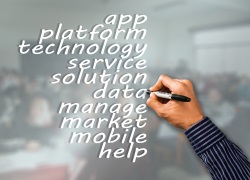What an IoT platform is and what it should do plagues the greatest minds in IoT. In short, a platform is simply something to base something else on but that doesn’t necessarily help organisations looking to decide which platforms to use, writes George Malim.
An IoT platform is actually something that does what a user wants it to do and the definition is increasingly fluid and determined from the perspective of the user. “An IoT platform needs to not have not only the technical capabilities to enable businesses to adopt IoT with minimal capex and with maximum agility and reach, but also the business capabilities that allow businesses to generate new revenues from IoT services,” says Mick Higgins, the vice president of Mobility at Tata Communications. “It needs to be underpinned by global ubiquitous connectivity and partnerships in the world’s mobile ecosystem.”
Others take a similar view, identifying a blend of technical capabilities augmented with flexibility and reach. “An IoT platform is really any cloudbased product that can connect with IoT devices to provide interconnectivity or functions that would otherwise be significantly more complicated to achieve,” says Craig Foster, the managing director of HomeServe Labs. “As a standalone term IoT platform doesn’t mean that much, but it is useful to have a category so that IoT developers know that it’s something targeted towards them and could help them add more functionality more quickly. Like anything, the term can be widely used and abused and shouldn’t be relied on as clear definition of exactly what to expect. There is no reason why one device couldn’t use multiple IoT platforms.”

For Jason Kay, the chief commercial officer at IMS Evolve: “A platform that can unlock access to useful data from existing and future infrastructure, enabling the ability to make better business decisions and release continuous and evolving value across your estate,” he explains. “An IoT platform needs to be able to use existing data and contextualise against existing systems, giving an organisation the ability to automate or distribute useful and actionable information efficiently and effectively. An effective IoT platform needs to be delivered by a solutions provider that is able to work with an organisation to gain the maximum value from the solution and continue to recognise, as well as have the ability to implement, new value opportunities.”
It’s really a case of horses for courses. “For companies aiming to solve real world problems using the IoT, there are usually two focal points to consider: the thing itself and the analytics being applied to the data. This helps define the purpose of an IoT platform,” explains Iain Woolley, the head of technology at Breed Reply. “In turn, this helps the business manage their things, such as identifying and authenticating, on-boarding new things, keeping track of the status of things, updating firmware, and transferring data to and from things. It also assists in managing the analytics, such as receiving and storing data, processing data into useful information, identifying and authenticating users and presenting information to users.”

Whether the term IoT platform is helpful is open to interpretation but it has created a marketplace that is extremely wide and difficult to understand amid conflicting definitions and marketing. “IoT is a fragmented ecosystem, with a broad set of requirements including devices, BSS/OSS, connectivity, analytics, applications and related services,” confirms Higgins. “In a similar way to the way that a universally accepted definition of the scope of service delivery platforms has never been clearly defined, there is a risk the same thing will happen to IoT platforms. It would be helpful if an industry definition or map of what an IoT platform is could be agreed upon.”
Others see the applicability of the IoT platform tag. “The term IoT has proved to be both useful and confusing within our industry,” acknowledges Kay. “It has enabled us as an organisation to quickly and effectively describe what our solution can do through a recognisable term that previously, was a challenge to condense. With this common understanding of the term however, comes the challenge of overcoming preconceived ideologies and misconceptions led by misleading marketing and PR within the industry. Some industry players have fallen for the temptation of re-badging old technology in order to jump on the bandwagon or define IoT in context of very linear applications, because it suits their delivery capability, rather than platforms that can be transformative to value creation in the enterprise.”
Yet, while some platform vendors have comprehensive platform propositions, others are specialised so consensus is hard to find. This leaves organisations sifting through marketing information to find what they need. The idea of a one-size-fits-all, holistic platform is probably wrong too.
“Anyone who thinks they’ll be able to use an IoT platform to solve all of their problems is going to be sorely mistaken and will hit walls in the future as they want to adapt their software to do more interesting things,” says Foster. “However an IoT platform can be a good way to accelerate the initial development. Generally, the best tip would be to go for one of the most famous platforms but don’t over rely on their functionality. Make sure you have intelligent, experienced and capable developers who can build their own functions so that you’re always able to switch away if or when needed”
Higgins acknowledges the challenge: “It is difficult to sift through the noise, but the starting point should be the aims and objectives that an organisation wants to set for its IoT initiative,” he adds. “From this the requirements can be defined, which will help to identify the appropriate IoT platform or services that the organisation wishes to use.”
Nevertheless, there are common capabilities and attributes that make up an IoT platform and most offerings will encompass at least some. “The key attributes should be the ability to build more quickly and to provide better interconnectivity between devices,” says Foster. “This is especially important for sensors and triggers that operate in real-time and need a central control. By using a platform you should make it easier to integrate your device and therefore remove a lot of potential barriers.”
Even within the relative confines of an IoT connectivity platform, Higgins identifies a series of core capabilities. “From the perspective of IoT connectivity, the need is for secure, low cost, controllable and global network coverage,” he says. “This ensures guaranteed connectivity for businesses’ IoT devices, regardless of their location around the world. You need a comprehensive set of applications programme interfaces (APIs) that can be used to access and integrate with the platform and services, so once a business is on-boarded, they can quickly make use of the global connectivity via the platform. You also need an online portal to be able to monitor and control devices.”
For Kay, it’s simple, IoT platforms should be: “Proven at scale, rapidly deployable, involve minimal capital expenditure, integrate with existing infrastructure, utilise existing data and systems, deliver value directly to your core purpose and provide an evolving solution through continuous engagement, delivering new value.”

That statement in a nutshell forms as good a shopping list as any for an organisation looking for an IoT platform. However it would be wise to recognise that a single platform is unlikely to address all an organisation’s needs and, even if it did, an organisation probably should consider platforms from more than one vendor in order to access sector specialisms most effectively.










